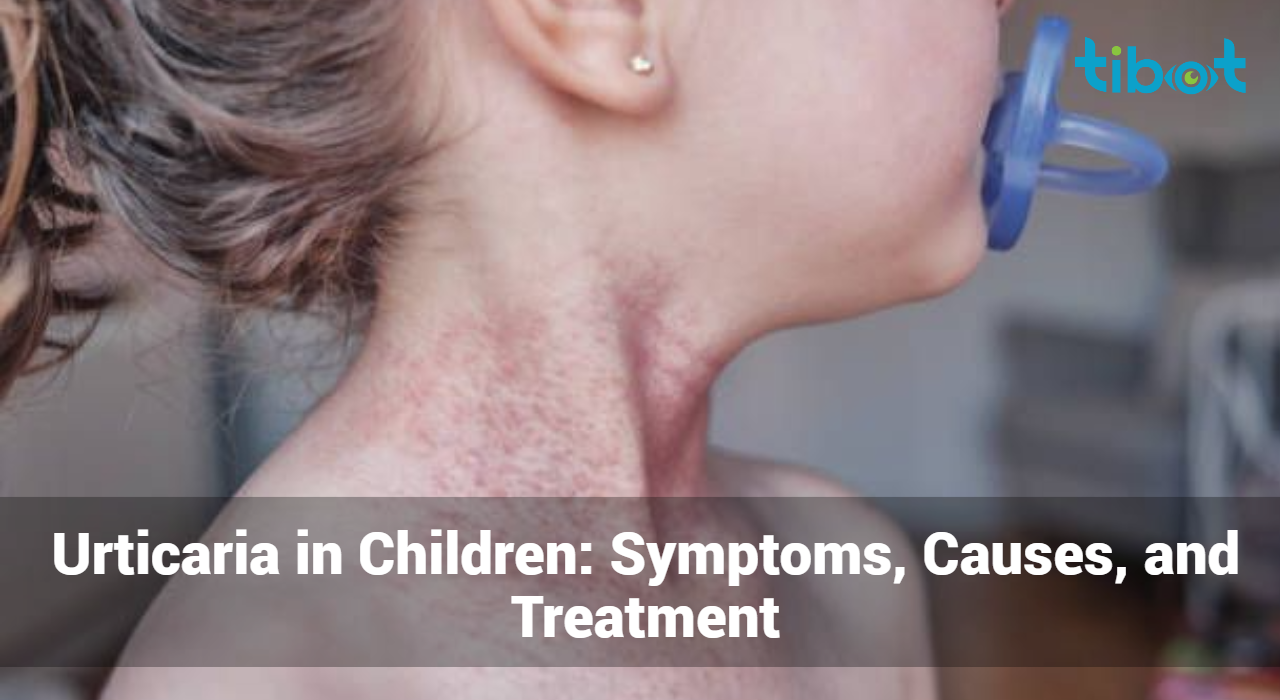Urticaria in Children: Symptoms, Causes, and Treatment

Urticaria, commonly known as hives, is a skin condition characterized by itchy, raised welts or rash. When it affects children, it can be particularly concerning for parents and caregivers. This comprehensive guide will explore urticaria in children, including its symptoms, causes, and treatment options. Understanding these aspects can help manage the condition effectively and ensure the well-being of your child.
What is Urticaria?
Urticaria is a skin condition where the skin develops raised, itchy welts or hives due to an inflammatory response. These welts can vary in size and shape and may appear anywhere on the body. The condition is caused by the release of histamine and other chemicals into the skin’s tissues, leading to inflammation and swelling.
Common Different Types of Urticaria
- Acute Urticaria: This type lasts for less than six weeks and is often caused by an allergic reaction or infection. It is the most common type in children.
- Chronic Urticaria: When urticaria persists for more than six weeks, it is considered chronic. Chronic urticaria can be more complex to diagnose and treat and may be linked to underlying health conditions or autoimmune issues.
- Physical Urticaria: Triggered by physical factors such as pressure, temperature changes, or exercise. Examples include cold urticaria (reaction to cold temperatures) and dermatographism (skin writing).
- Chronic Spontaneous Urticaria: Occurs without an identifiable trigger and can persist for months or even years.
What Are The Symptoms of Urticaria in Children?
Identifying urticaria in children involves recognizing specific symptoms. Common signs include:
1. Raised Welts: The primary symptom of urticaria is raised, red, or pink welts on the skin. These welts can vary in size and shape and may merge to form larger patches.
2. Intense Itching: The welts often cause intense itching. This itching can lead to significant discomfort and may cause children to scratch the affected areas, potentially worsening the condition.
3. Swelling: Swelling can occur around the welts, making the affected areas appear puffed or swollen. This swelling can sometimes extend to deeper layers of the skin.
4. Fluctuating Appearance: The welts of urticaria can change rapidly, with new welts appearing as others fade. This fluctuation can make the condition seem unpredictable.
5. Associated Symptoms: In some cases, urticaria may be accompanied by other symptoms such as abdominal pain, nausea, or headache, particularly if it is linked to an underlying allergy or infection.
6. Discomfort and Disruption: The itching and swelling associated with urticaria can lead to significant discomfort and may interfere with the child’s daily activities and sleep.
What Causes of Urticaria in Children?
Understanding the causes of urticaria can help in its management and prevention. Common causes and triggers include:
1. Allergic Reactions: Allergic reactions to foods (such as peanuts, milk, or eggs), insect stings, medications, or environmental allergens (like pollen or dust mites) can trigger urticaria.
2. Infections: Viral infections, such as the common cold or flu, are known to trigger acute urticaria. Bacterial infections can also be a cause.
3. Environmental Factors: Exposure to environmental factors, such as pollen, animal dander, or mold, can trigger urticaria in sensitive children.
4. Physical Triggers: Physical factors like pressure on the skin, extreme temperatures (cold or heat), or excessive sweating can provoke physical urticaria. Dermatographism, where hives appear after the skin is scratched or rubbed, is one example.
5. Stress: Emotional stress or anxiety may exacerbate or trigger urticaria in some children, making it important to manage stress levels.
6. Underlying Health Conditions: Chronic urticaria may be linked to underlying health conditions such as autoimmune disorders, thyroid disease, or chronic infections.
7. Food Additives and Preservatives: Certain food additives, preservatives, and colorants can trigger allergic reactions in some children, leading to urticaria.
Diagnosis of Urticaria in Children
Accurate diagnosis is crucial for effective treatment and involves several steps:
1. Medical History: A detailed medical history, including recent illnesses, exposures, and known allergies, is essential. This helps in identifying potential triggers or underlying causes.
2. Physical Examination: A thorough examination of the skin to assess the characteristics and distribution of the welts. This helps differentiate urticaria from other skin conditions.
3. Allergy Testing: Skin tests or blood tests may be conducted to identify potential allergens. This can help pinpoint specific triggers and guide treatment.
4. Additional Tests: For chronic or recurrent cases, additional tests may be required to rule out underlying conditions or autoimmune disorders.
Analyze Skin Diseases
Use our AI chatbot to determine your skin condition
What Are The Treatment Options of Urticaria in Children?
The treatment for urticaria in children aims to relieve symptoms and address underlying causes. Options include:
1. Antihistamines: Non-sedating antihistamines, such as cetirizine or loratadine, are commonly used to reduce itching and swelling by blocking histamine receptors.
2. Topical Treatments: Topical anti-itch creams or ointments containing ingredients like calamine or hydrocortisone can provide localized relief from itching and inflammation.
3. Avoidance of Triggers: Identifying and avoiding known triggers, such as specific foods or environmental allergens, is crucial. Keeping a symptom diary can help track and identify potential triggers.
4. Prescription Medications: In cases where over-the-counter antihistamines are ineffective, a healthcare provider may prescribe stronger antihistamines or corticosteroids for more severe symptoms.
5. Management of Underlying Conditions: If urticaria is associated with an underlying condition, such as an autoimmune disorder, treating the primary condition may help alleviate urticaria symptoms.
6. Emergency Treatment: In cases of severe allergic reactions or anaphylaxis, immediate medical attention is required. Treatment may include epinephrine and other emergency measures.
Prevention of Urticaria in Children
Preventing urticaria involves minimizing exposure to triggers and maintaining overall health. Strategies include:
1. Identify and Avoid Triggers: Work with a healthcare provider to identify specific triggers and implement strategies to avoid them. This may involve dietary changes, environmental modifications, or lifestyle adjustments.
2. Allergy Testing: Conduct allergy testing if allergies are suspected. This information can guide preventive measures and treatment options.
3. Maintain Good Hygiene: Practicing good hygiene, such as regular hand washing and keeping living spaces clean, can help reduce the risk of infections that may trigger urticaria.
4. Healthy Lifestyle: Promote a healthy lifestyle through a balanced diet, regular exercise, and adequate sleep. A strong immune system can help manage and prevent urticaria.
5. Stress Management: Teach children stress management techniques and create a supportive environment to help manage emotional triggers.
6. Regular Medical Check-ups: Regular visits to a healthcare provider can help monitor and manage chronic conditions that may contribute to urticaria.
Conclusion
Urticaria in children can be distressing, but with proper understanding, diagnosis, and treatment, most cases can be effectively managed. Recognizing the symptoms, identifying potential triggers, and implementing appropriate treatment and preventive measures are key to alleviating discomfort and ensuring your child’s well-being. If your child exhibits signs of urticaria, consult a dermatologist or healthcare professional for personalized advice and treatment to help manage and prevent this condition.





